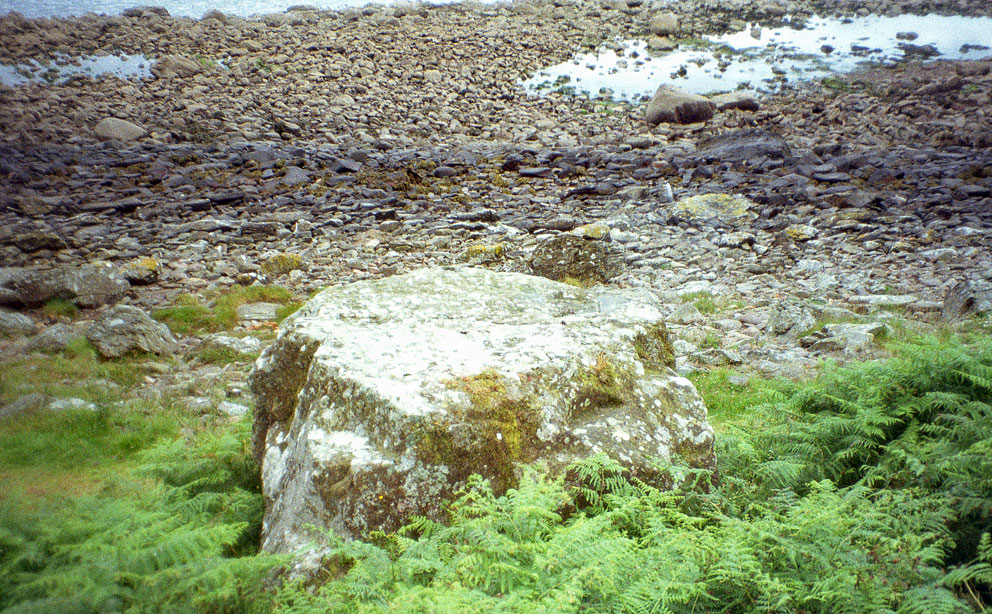On Holy Island, in the Firth of Clyde, there lies a large, and very strange, carved stone. It is flat-topped, seven feet high, seven across, and lies just below the cave of St. Molaise on the western shore of the island. A ring-topped cross is carved on the side, along with steps that allow you to easily climb to the top. But what's really odd are what look like seats, carved around its top.
 |
| The Holy Island stone - two of the 'seats' visible |
This strange stone has four names: Pulpit Rock, St Molaise's Table, the Saint's Chair, and the Judgement Stone. Each name implying a different purpose. Another interesting thing is that lying at its base is a stone font. About 100 years ago vandals threw the font onto the beach, but it has since been put back in place.
 |
| The font of the Judgement Stone |
So what was this stone? Was it St Molaise's pulpit rock? Did he use it as a table to dine? Did he sit there to enjoy the view? Or did he stand on it as a judge, determining the fate of accused sinners sitting in the seats, or the suitability of those seeking the priesthood? Or could it have been the base for a shrine or cross, and the 'seats' places to set offerings? Unfortunately no one will ever know the purpose of this mysterious thing. If what's carved on the stone are seats, they're not comfortable ones. I could not stay seated without using my feet to prop me in place.
Whatever it was used for, the stone is part of a ritual landscape; nearby are St Molaise's cave and holy well. See this PSAS page for more on the relics of Holy Island.
Whatever it was used for, the stone is part of a ritual landscape; nearby are St Molaise's cave and holy well. See this PSAS page for more on the relics of Holy Island.


No comments:
Post a Comment